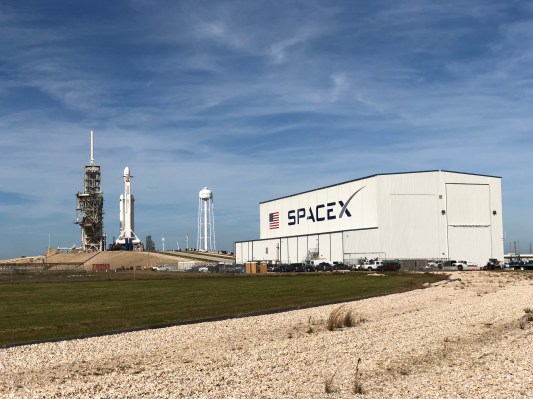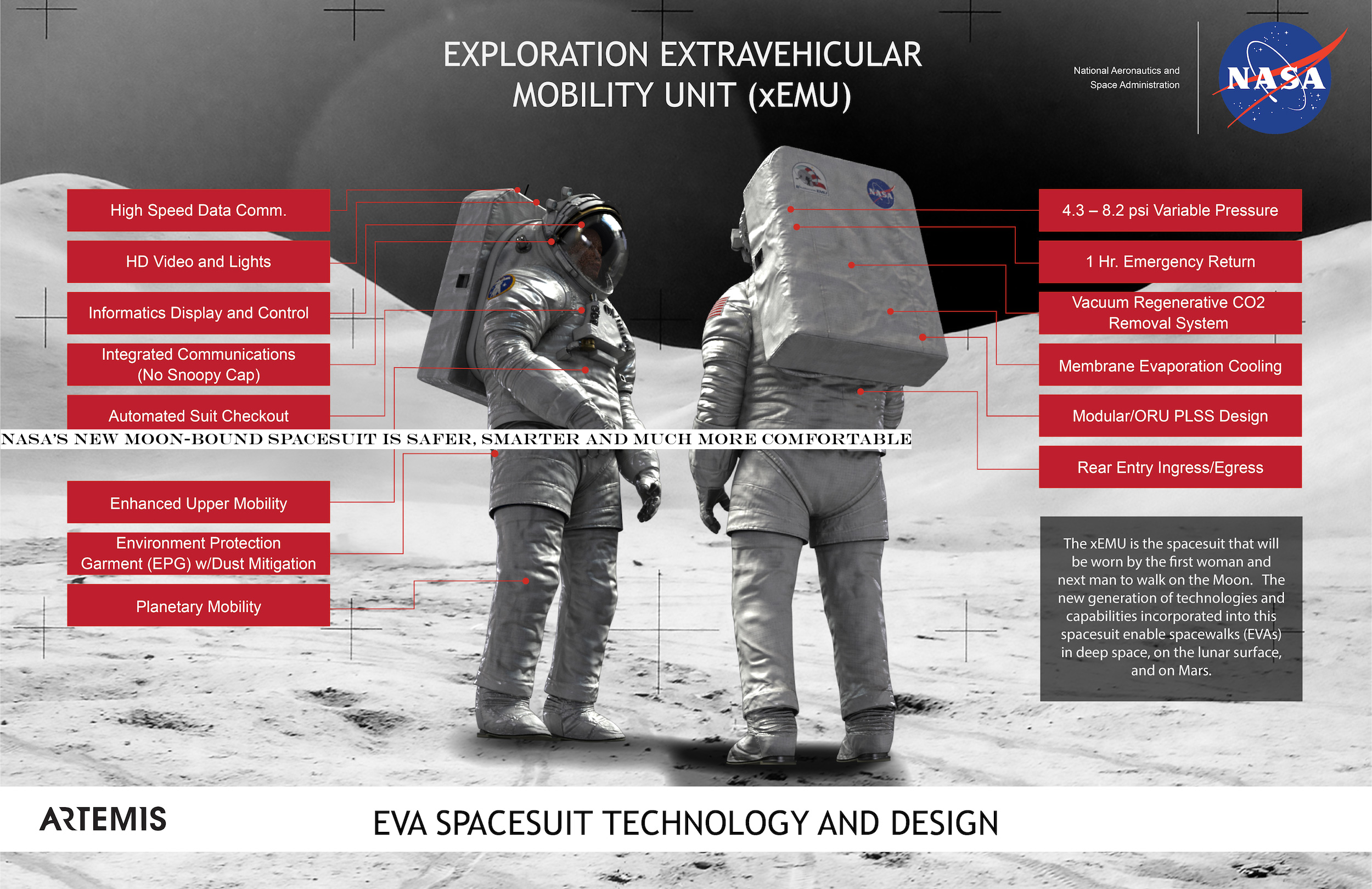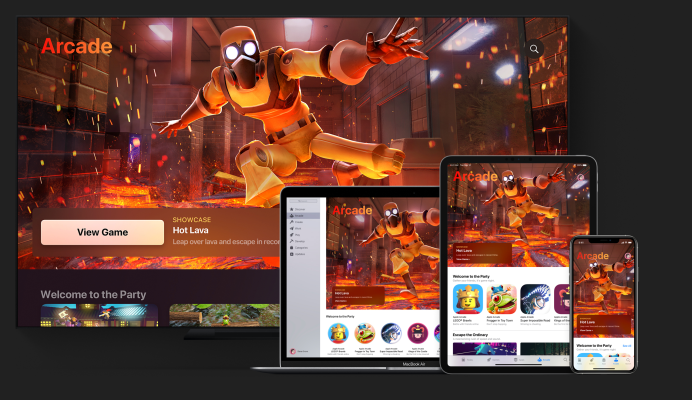Music
Trailers
DailyVideos
India
Pakistan
Afghanistan
Bangladesh
Srilanka
Nepal
Thailand
StockMarket
Business
Technology
Startup
Trending Videos
Coupons
Football
Search
Download App in Playstore
Download App
Best Collections
Technology
NASA Administrator Jim Bridenstine was at SpaceX HQ in Hawthorne, Calif. on Thursday, delivering an address alongside NASA astronauts Bob Behnken and Doug Hurley, who will launch aboard SpaceX commercial Crew Dragon capsule, and SpaceX CEO Elon Musk.
Bridenstine kicked off with some brief remarks about the importance and priority of the crew launch mission, which he said both he and Musk are in agreement that the commercial launch of American astronauts is &the highest priority& of the various projects both his agency and SpaceX have under development.
He and Musk then went into some detail about where the program is now, and what remains to be done to get to an actual crewed flight — the first of which will be a test flight. Bridenstinecomments essentially took 2019 off the table for this to happen, with the administrator saying he was &very confident that in the first part of next year, we will be able to launch American astronauts on American rockets,& and that if &everything goes according to plan,& it would take place in the first quarter of 2020.
Musk noted that in order for SpaceX to have confidence in its Crew Dragon launch systemreliability for a crewed mission they would have to have run 10 successful drop tests using the newly developed Mark 3 parachute system for the capsule &in a row.& Bridenstine said that based on the current schedule, SpaceX could run as many as 10 drop tests total using the Mark 3 system between now and the end of this year.
This new Mark 3 system features much stronger lines connecting the sheets of material used in their construction, Musk said, thanks to switching away from nylon to a material called &xylon,& which is three or more times stronger, per the CEO. The new version also uses a new stitching pattern compared to Mark 2 for additional strength.
Both Musk and Bridenstine were keen to point out that the timelines discussed, including the 2019 target for the crewed flight that SpaceX has been working toward until now, are ¬ deadlines,& but are instead a &best guess& in Muskwords, based on the current state of affairs. Said state of affairs can change quickly, and Bridenstine added that &there are still things we could learn [in testing]& that could alter the timelines later than the first part of next year.
As for Crew Dragon product, Musk said SpaceX is ramping to a cadence of producing a new capsule around once every three or four months, a rate it hopes to achieve in order to &get in a cadence of operational flights to the space station.&
Bridenstine also addressed the tweet he posted in late September regarding SpaceXStarship program update (posted in full below).
&As the NASA Administrator, I have been focused on returning to realism when it comes to costs and schedules,& he said. &And a lot of our programs have not been meeting costs and schedules. And this has been developing over time. And a lot of these programs are, you know, five years old, 10 years old […] so what we&re trying to do is get back to a day where we have realistic costs and schedules, and so I was signaling, and I haven&t done it just to SpaceX, but to all of our contractors that we need more realism built into the development timelines.&
Still, Bridentstine clarified that NASA definitely supports the Starship program as well, even if itprioritizing Crew Dragon at the current moment. &I want people to make no mistake: NASA has an interest in seeing Starship be successful,& he said, while also pointing out NASArecent investment in Starship via its &Tipping Point& project funding.
- Details
- Category: Technology
Read more: NASA Administrator ‘very confident’ SpaceX crew launch could happen in early 2020
Write comment (95 Comments)
SpaceX CEO joined NASA Administrator Jim Bridenstine at SpaceX HQ in Hawthorne today to provide an update on the commercial crew launch program that the company is working on with the agency. During the remarks, which detailed the current state of the program and next steps, Musk reiterated twice that the intellectual property itdeveloping in working with the agency is free for NASA to share with whoever it should wish.
Early on in the Q+A portion of the event, Musk said that the learnings that SpaceX has gathered from the Crew Dragon parachute development program is free to share with anyone who wants it & SpaceX is working on its third major iteration of the parachutes it will use to ensure the Crew Capsulesafe return to Earth.
&I&ve been very very clear with Jim that any SpaceX data should not be considered proprietary,& Musk said during the remarks. &It can be used by any of our competitors […] No charge.&
Later on, he reiterated that what he meant was literally any of SpaceXIP is on the table for NASA to distribute freely as the agency sees fit.
&I want to be clear: NASA can share all of our IP with anyone that NASA wants,& Musk said. To which Bridentstine replied that the agency genuinely appreciated this freedom but that it has limits on that potential sharing to consider.
&There is IP that it is in the inters of the nation that we cannot be sharing with people, or with countries that would not have our interest at heart,& adding that this is why itimportant that the partners have all their information technology secured and protection measures in place.
- Details
- Category: Technology
Read more: Elon Musk says that NASA is free to share all SpaceX IP with ‘anyone it wants’
Write comment (100 Comments)
When Susan Fowler 2017 blog post shined a light on Uberraucous culture, outlining rampant harassment and sexism, a debate erupted. What role do the deep-pocketed investors behind the company, those who allowed it to scale to monstrous proportions, have in developing and nurturing its culture? Entrepreneurs and venture capitalists themselves wondered aloud, how involved should a venture fund be in early-stage recruiting processes and ensuring a safe environment for employees? If a culture is bad, unsafe, damaging, is it the VCfault?
Late-stage venture funds, for the most part, miss the opportunity to deeply impact their portfolio companies& cultures. When they invest, typically large sums of capital in companies with hundreds of employees and multiple offices, the companyculture is formed and, as Uber and others have proven, rebuilding culture a decade in is no easy challenge. Early-stage funds, however, the people that write the very first check in startups, have a front-row seat to decisions crucial to defining how a company operates and treats its employees in the long term. These people, if they care to, have the power to help determine key hires and establish company values, norms and behaviors from the get-go.
This week, San Francisco-based early-stage fund True Ventures hired its first-ever vice president of culture, a move that suggests VCs are taking concrete steps toward further involving themselves in the company-building process from a D-I and hiring perspective. Madeline Kolbe Saltzman joins the firm, which raised $635 million across two new funds last year, from Handshake, where she was the VP of people and talent.
&Therea responsibility to guide the company and the founder to being the best they can be, and that involves paying attention to who you&re hiring and how people are being treated,& Saltzman tells TechCrunch. &If we can come in and establish inclusive norms, my hope is that our companies will scale inclusively as well.&
Most venture capitalists are in regular communication with active investments. Early-stage investors, particularly, are very involved with building businesses, facilitating hires and scaling. But as they seek to decrease cash-burn or find product-market fit, VCs are not often very concerned with issues of diversity and inclusion, something thatbecame increasingly important as companies are finally being held accountable for the diversity of their workforces.
- Details
- Category: Technology
Read more: Why venture capital firms need culture experts
Write comment (91 Comments)
Einride, the Swedish autonomous vehicle startup known for its futuristic pods designed to haul freight, has raised $25 million in a Series A round that will be used to fund its expansion into the United States.
The round was co-led by EQT Ventures and NordicNinja VC, a fund backed by Panasonic, Honda, Omron and the Japan Bank for International Cooperation. Other investors joining the round include Ericsson Ventures, Norrsken Foundation, Plum Alley Investments and Plug and Play Ventures. The startup has raised $32 million to date.
Einride self-driving vehicle isn&t quite a truck, although itmeant to perform the same freight-hauling tasks. The companyT-Pod electric vehicle, which was unveiled in 2017, has been running on public roads since May of this year.
Einride, which was founded in 2016, has landed several customer contracts, including logistics provider DB Schenker and supermarket chain Lidl. Einride has a commercial pilot with DB Schenker. The startup said it has also signed on &large U.S.-based retail companies,& without naming them.
The funds will be used to hire more people, invest in its software platform and expand internationally, notably the U.S., according to the company. Einride plans to open a U.S. office next year.
&Our ambition is to disrupt the transport industry and closing our series A brings us one step closer to that goal,& Einride co-founder and CEO Robert Falck. &The funding will allow us to start expanding in the U.S., deliver on our technology road map and to meet rapidly increasing customer demand.&
- Details
- Category: Technology
Read more: Autonomous trucking startup Einride eyes US market with $25 million in new funding
Write comment (93 Comments)The next Americans to set foot on the Moon will do so in a brand new spacesuit thatbased on, but hugely improved from, the original Apollo suits that last went up there in the &70s. With easier entry, better mobility and improved communications, these won&t be nearly as clumsy or restrictive — though you still wouldn&t want to wear one around the house.
The new spacesuit, known as the Exploration Extravehicular Mobility Unit or xEMU, is still deep in development, but its features have been more or less finalized. Italready being tested underwater, and orbital testing is scheduled for 2023.
Rather than build something completely new from the ground up, NASA engineers decided to address the (sometimes literal) pain points of a previous, proven design. As such, the new suit superficially resembles the ones in which we saw moonwalkers bunny-hopping around the lunar surface. But thatbecause the basic design for a suit that protects you from hard vacuum and cosmic radiation is relatively straightforward.
In NASAwords, a spacesuit is &a personalized spaceship that mimics all of the protections from the harsh environment of space and the basic resources that Earth and its atmosphere provide.& Thereonly so much wiggle room there.
But while some parts may not have changed much since the old days, others are getting major improvements. First and foremost, both for safety and mission purposes, maneuverability has been upgraded in tons of ways.

Infographic showing new and updated features of NASAnew xEMU spacesuit
For one thing, there are altogether new joints and better ranges of motion for existing ones. The standard &astronaut stance& indicative of the inflexibility of the Apollo suits should be all but eliminated with the new freedoms afforded xEMU users. Not only will the normal range of motion be easier, but astronauts will be able to reach across their own torso or lift something clear over their head.
More flexible knees and &hiking-style& boots with flexible soles will make crouching and getting up much easier as well. Ithard to believe we got this far without those basic capabilities.

A 3D scan of the body (indicated by the dots) shows how various suits and parts would fit
The fit of the suits will be vastly better as well; NASA is using anthropometry, or 3D scanning of the body, to determine exactly which pieces and fits will be best for a given astronaut.
Speaking of which, much of the suit will be made from easily swappable, modular parts. The lower half can be switched out when doing an orbital EVA versus a surface EVA, for instance. And the helmetvisor has a &sacrificial& protective layer that can easily be replaced with a new one if it gets damaged.
Inside the helmet, the familiar but apparently widely disliked &Snoopy caps& that housed microphones and such are gone, replaced by modern voice-activated mics and headphones that will produce much better audio quality and much less sweat.
For that matter, the entire communications stack has been replaced with a new HD camera and lights, connected by a high-speed wireless data link. Live video from the Moon may be old hat, but itgoing to be a bit different from that grainy black-and-white business in 1969.
One of the most important new features is rear entry. The awkward process of donning an old-style EVA suit requires a good deal of space and help. The new ones are entered via a hatch on the back, allowing more natural placement of arm hinges and other features, and possibly changing how the suits are mounted. One can easily imagine a suit acting as a sort of airlock: you climb in the back, it seals you in, and you walk right out into space. Well, there&d probably be more to it than that, but the rear-entry hatch could facilitate some cool stuff along those lines.
Although NASA is designing and certifying these suits, it may not actually make them itself. The agency called last week for input on how it might best source spacesuits from the commercial space industry.
Thatpart of NASAdecision to rely increasingly on contractors and private industry to support its 2024 Moon ambitions. Of course, contractors were an essential part of the Apollo program as well, but NASA is now giving them much more leeway and may even use private launch services.
You can keep up with the latest NASA spacesuit news here, of course, or at the agencySuitUp tag.
- Details
- Category: Technology
Read more: NASA’s new Moon-bound spacesuit is safer, smarter and much more comfortable
Write comment (97 Comments)
Apple Arcade is a new kind of App Store. One where eclectic, indie and original content can shine. A place where gamers can play without being hounded by ads or strong-armed into spending on in-app purchases. But unlike the original App Store, Apple Arcademarketplace is a black box. Thereno way for consumers or developers to find out if Arcade produces a breakout hit game or even which app everyone is playing right now.
Thatbecause Apple Arcade has ditched one of the App Storecore components: the Top Charts.
Traditionally, the App StoreTop Charts highlighted which games are most popular, based on downloads, velocity, and other signals Apple never disclosed. On the main App Store, users can browse these top-ranked apps and games, including both free and paid titles. And through APIs, app store intelligence firms like App Annie, Sensor Tower, and others gain access to even more data — like top grossing apps and games, for example.
However, following the Apple Arcade subscription servicelaunch, these firms told TechCrunch that Apple is not exposing any of the data that providers such as themselves have typically had access to in order to generate download and revenue estimates. There is some expectation that could change in time, but itnot clear if or when that will be.
- Details
- Category: Technology
Read more: Apple Arcade’s black box
Write comment (92 Comments)Page 664 of 5614

 15
15





